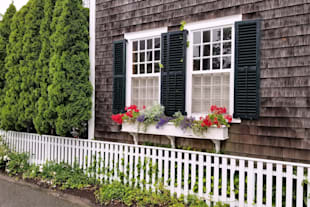Double glazing your windows offers significant environmental benefits that go beyond just keeping your home warm. These specially designed windows feature two glass panes with a gap between them, creating an insulating barrier that reduces heat loss from your home. By installing double glazed windows, households can dramatically reduce their energy consumption, which leads to lower carbon emissions and a smaller environmental footprint.
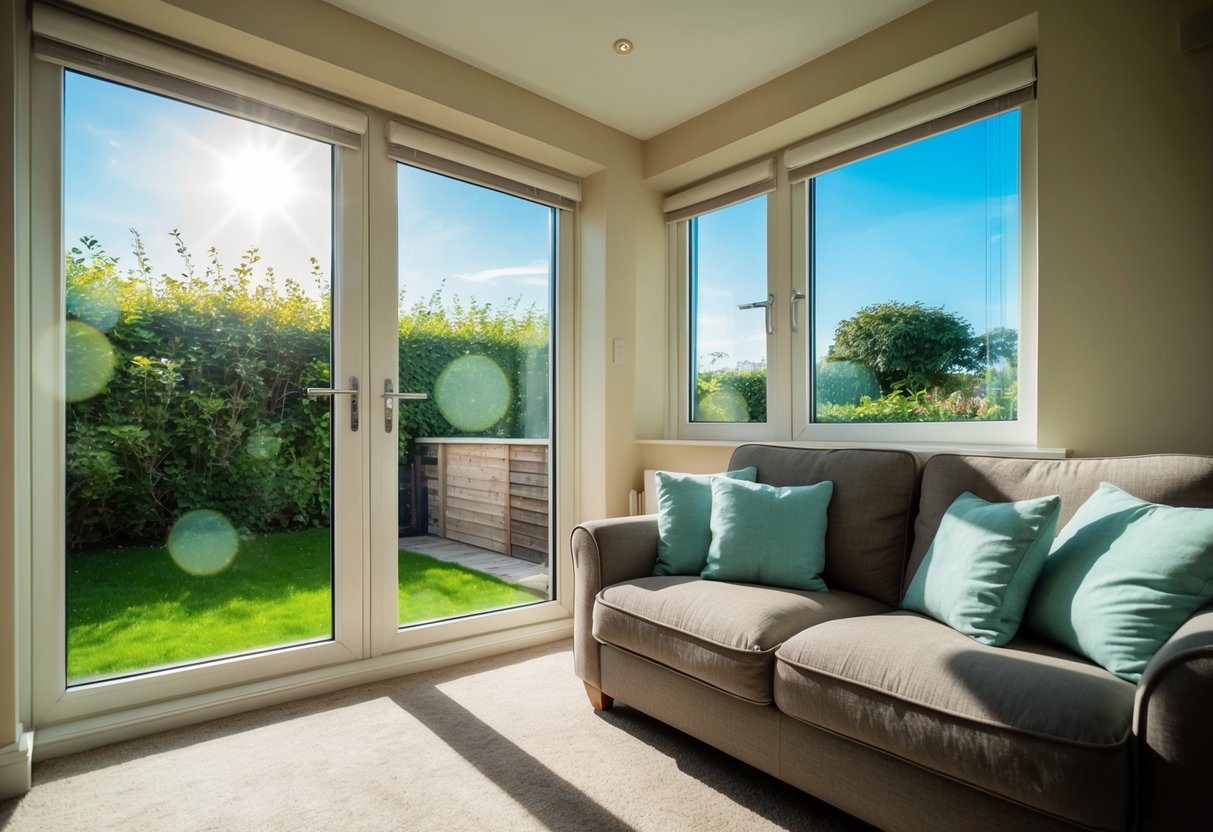
This energy-efficient solution helps homeowners combat rising energy costs while contributing to global environmental goals. When less heat escapes through windows, heating systems work less frequently, consuming less fuel or electricity. This reduction in energy usage directly translates to fewer greenhouse gases being released into the atmosphere from power stations and home heating systems.
Beyond energy savings, double glazing also provides excellent sound insulation, creating a quieter indoor environment free from outside noise pollution. The extended lifespan of these windows compared to single-glazed alternatives means fewer replacements and less manufacturing waste over time, further contributing to their positive environmental impact.
How Double Glazing Works to Enhance Environmental Performance
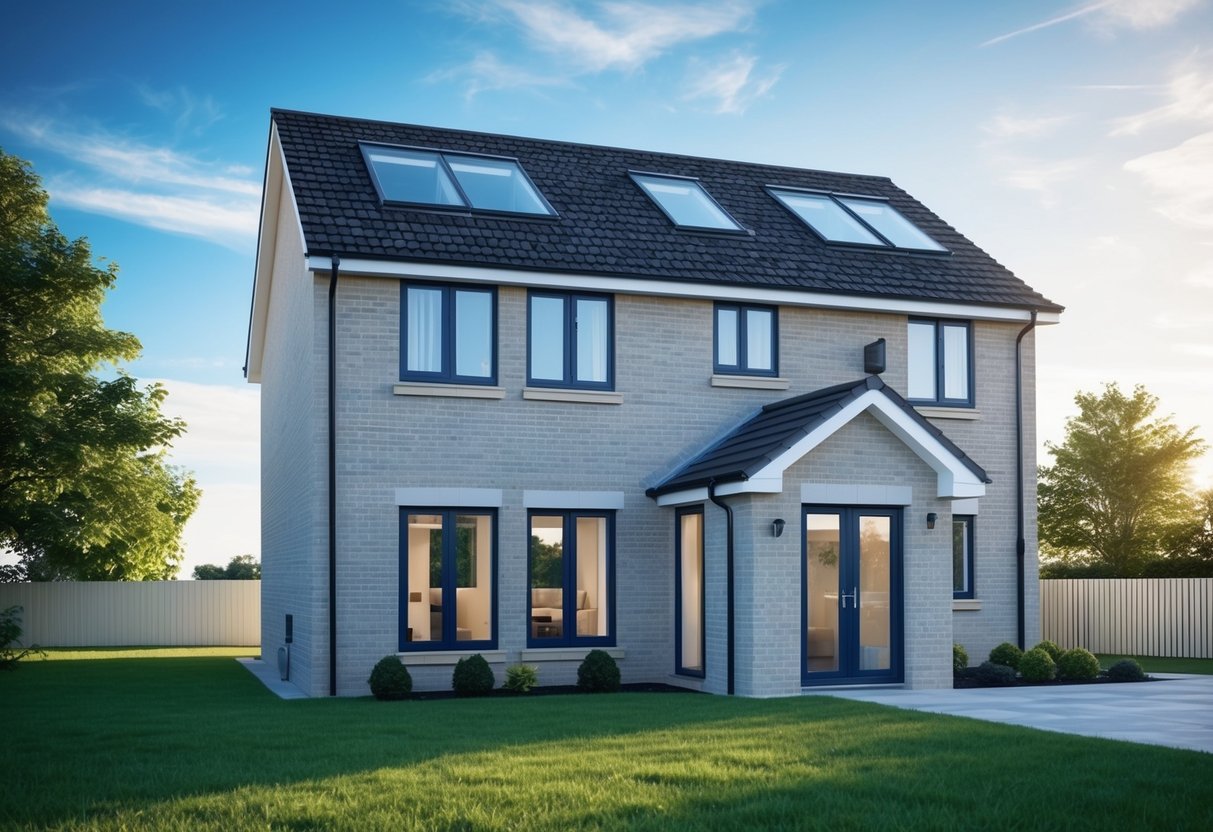
Double glazing technology significantly improves a home’s energy efficiency through multiple physical principles. The strategic design and materials create a robust barrier against heat transfer and energy loss.
The Science Behind Double Glazed Windows
Double glazing consists of two glass panes separated by a gap filled with air or gas. This arrangement works based on simple physics – trapped air or gas has poor heat conductivity. When heat tries to escape through your windows during winter, it must pass through glass, then the insulating air gap, then another pane of glass.
This slows heat transfer dramatically compared to single glazing. The trapped air or gas acts as a thermal buffer zone. Many modern systems use argon gas instead of air because it conducts heat even less efficiently.
The width of the gap matters too. An optimal space of 12-16mm provides the best thermal resistance while preventing convection currents from forming within the gap.
Components and Materials Used in Double Glazing
UPVC frames are the most common choice for double glazed windows in the UK. They offer excellent insulation properties and require minimal maintenance. Aluminium frames with thermal breaks and composite frames are also popular alternatives.
The glass itself often features special coatings. Low-E (low emissivity) glass has a microscopically thin metal oxide layer that reflects heat back into your home while still allowing sunlight to enter.
The spacer bars separating the glass panes are typically made from aluminium or warm-edge materials. These contain desiccants to absorb moisture that might otherwise fog the windows.
Seals around the entire unit prevent air leakage, maintaining the insulating properties over time. Quality seals are crucial for long-lasting performance.
Thermal Insulation Mechanisms
Double glazing works through several insulation mechanisms simultaneously. The primary method is reducing conduction – the direct transfer of heat through solid materials. The air/gas gap significantly interrupts this process.
Convection reduction is another key factor. The sealed gap prevents air circulation that would otherwise carry heat away. In winter, this keeps warm air from cooling against the window surface.
Radiation control is achieved through Low-E coatings. These reflect infrared heat waves back into your home rather than allowing them to pass through the glass. In summer, this same technology can reflect exterior heat away from your home.
The combined U-value (measure of thermal efficiency) of double glazed windows is typically between 1.2-1.6 W/m²K, compared to 5.0+ for single glazing. This represents a dramatic improvement in insulating capability.
Reducing Heat Loss and Improving Energy Efficiency
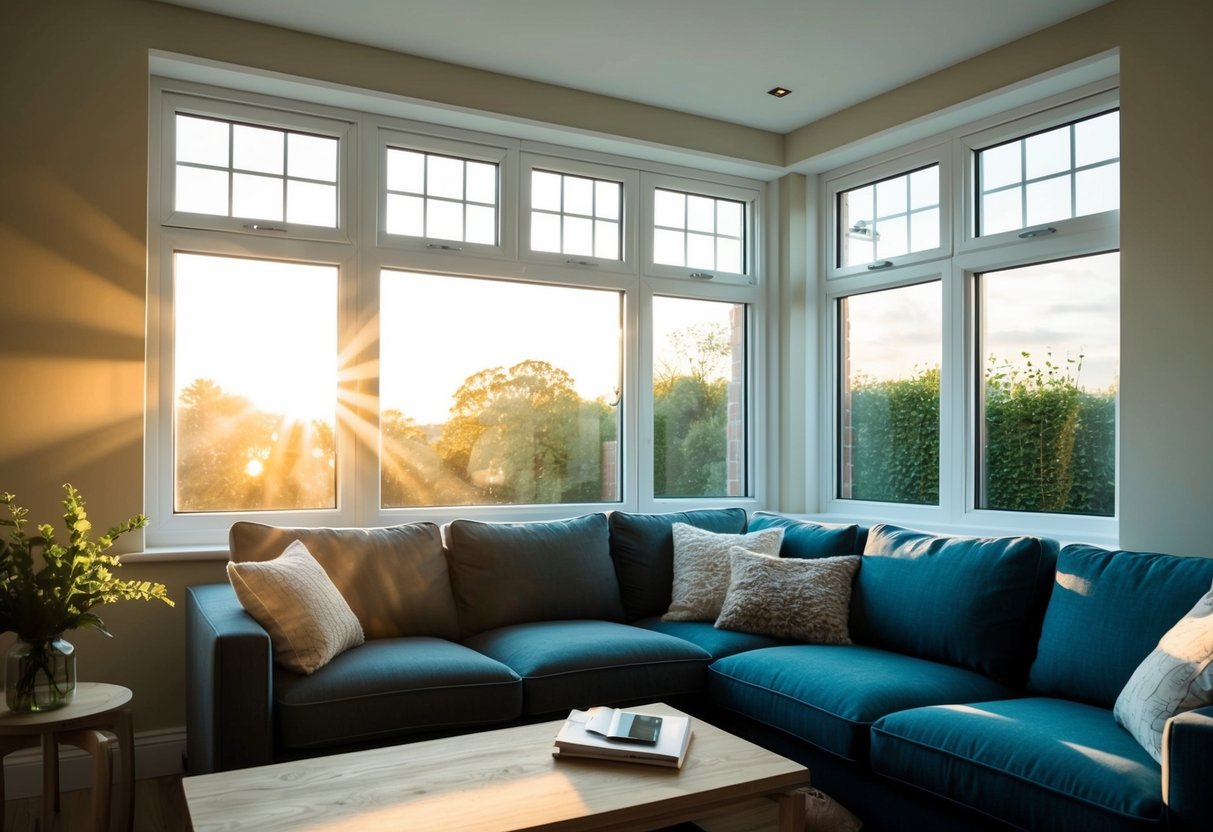
Double glazing significantly improves home insulation by creating a thermal barrier that prevents heat from escaping. This technology helps maintain consistent indoor temperatures while reducing energy consumption and associated costs.
Heat Loss Prevention and Enhanced Comfort
Double glazed windows work by placing two glass panes with an air gap between them. This design creates an effective barrier that reduces heat transfer by 50-70% compared to single glazing. The trapped air or gas in the space between panes acts as an insulator, preventing warmth from escaping during winter months.
Cold spots and draughts often develop near poorly insulated windows. Double glazing eliminates these uncomfortable areas by maintaining more consistent surface temperatures on the interior glass.
The improved thermal barrier also helps balance temperatures throughout your home. With less heat escaping through windows, you’ll notice fewer temperature fluctuations between rooms and floors.
Many modern double glazed units include low-emissivity (low-E) coatings that reflect heat back into the room whilst allowing sunlight to enter. This further enhances their thermal performance.
Energy Saving and Lowering Energy Bills
The superior insulation of double glazing directly translates to lower energy consumption. When less heat escapes, heating systems don’t need to work as hard or run as frequently.
Studies show that replacing single glazing with double glazing can reduce heating costs by up to 15-20% annually. These savings accumulate year after year, offsetting the initial installation costs.
Double glazing provides benefits throughout all seasons. In winter, it retains heat, while in summer, it helps keep hot air outside—reducing both heating and cooling expenses.
Energy ratings for windows use a scale similar to household appliances (A++ to E). Higher-rated double glazed windows deliver greater energy efficiency and more substantial bill reductions.
Contributing to an Energy-Efficient Home
Double glazing forms a crucial part of an energy-efficient home strategy. Combined with proper insulation and efficient heating systems, it creates a comprehensive approach to energy conservation.
An energy-efficient home produces fewer carbon emissions. By using less energy for heating and cooling, you directly reduce your carbon footprint and help combat climate change.
Double glazed windows increase property value. Potential buyers recognise the long-term cost savings and comfort benefits associated with energy-efficient features.
Beyond energy savings, double glazing offers additional benefits that contribute to an energy-efficient lifestyle:
- Reduced noise pollution
- Enhanced security features
- Less condensation on interior glass
- UV protection for furnishings
Many governments offer incentives or rebates for energy-efficient home improvements, including double glazing installation, making it even more economically attractive.
Environmental Impact and Sustainability Benefits

Double glazing offers remarkable environmental benefits that extend beyond home comfort. These windows help reduce energy use, cut greenhouse gas emissions, and support sustainable living practices in meaningful ways.
Lowering Carbon Footprint and CO2 Emissions
Double glazed windows significantly reduce a home’s carbon footprint by decreasing the amount of energy needed for heating and cooling. When less heat escapes in winter and less cool air leaks out in summer, heating systems and air conditioners run less frequently.
This energy reduction directly translates to lower CO2 emissions. A typical UK home with single glazing that switches to double glazing can reduce its carbon emissions by up to 680kg per year. That’s equivalent to driving about 2,500 fewer miles annually.
The manufacturing process for modern double glazed units has also become more efficient. Many manufacturers now use recycled materials and employ eco-friendly production methods that use less energy and create fewer emissions than older manufacturing techniques.
Environmental Stewardship and Eco-Friendly Choices
Choosing double glazing represents thoughtful environmental stewardship. These windows help conserve natural resources by reducing the need for fossil fuels used in home heating.
Many double glazing products now come with environmentally friendly features. These include frames made from sustainable materials like responsibly sourced wood or recycled uPVC. Some manufacturers have adopted water-based rather than solvent-based treatments for wooden frames, further reducing environmental impact.
The longevity of quality double glazing also contributes to sustainability. Modern units often last 20+ years, meaning fewer replacements and less waste going to landfill over time. When replacement is eventually needed, many components can be recycled, creating a more circular economy approach.
Climate Change Mitigation
Double glazing plays a vital role in climate change mitigation strategies for the built environment. Buildings account for approximately 40% of the UK’s carbon emissions, making energy-efficient windows a crucial element in addressing climate concerns.
By improving thermal insulation, double glazed windows help buildings adapt to increasingly extreme weather patterns. They keep homes warmer during cold snaps and cooler during heatwaves, reducing the need for additional heating or cooling that would contribute to climate change.
The collective impact is significant. If all single-glazed windows in UK homes were replaced with double glazing, the CO2 reduction would equal taking over a million cars off the road. This demonstrates how individual home improvements can create meaningful collective action against climate change.
Minimising Noise and Moisture for a Healthier Home
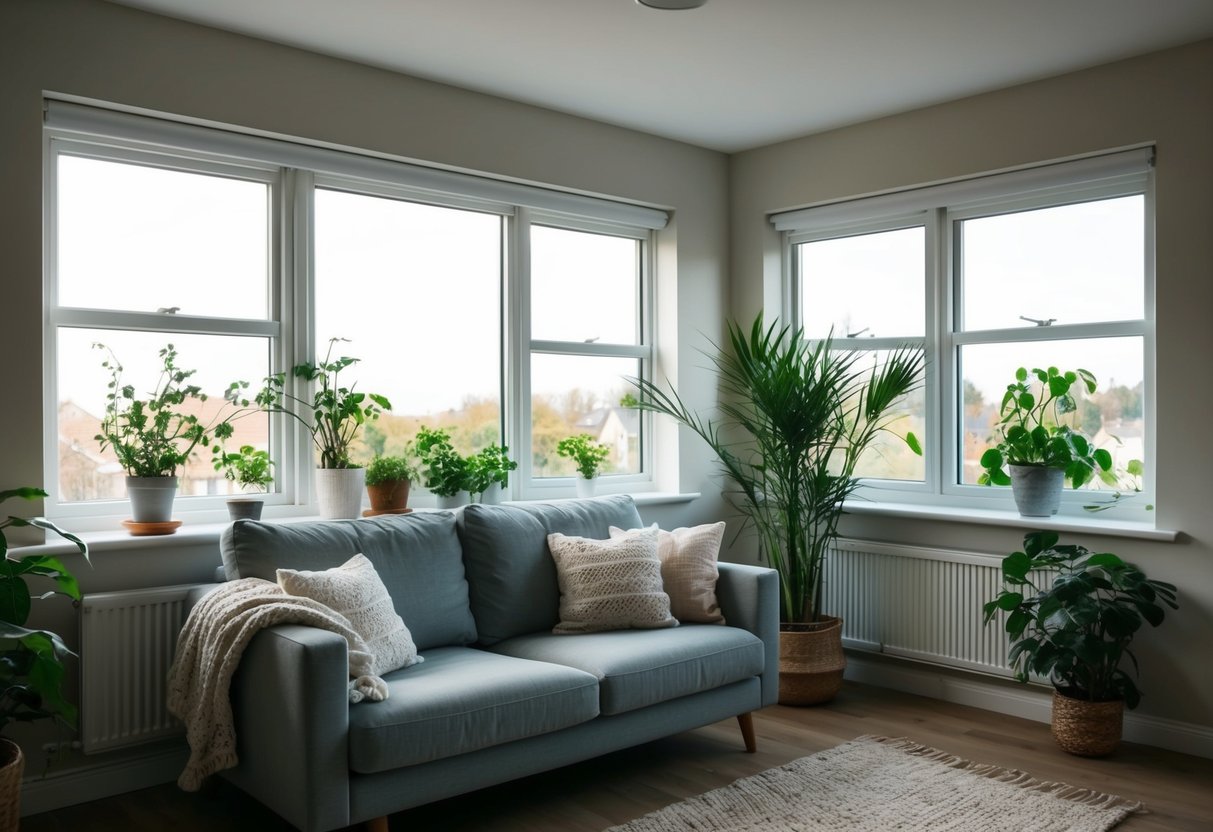
Double glazing offers more than just energy efficiency. It creates a healthier living environment by reducing noise disruptions and controlling moisture levels in your home.
Noise Reduction and Sound Insulation
Double glazed windows provide excellent sound insulation due to their dual-pane design. The gap between the two glass panes acts as a buffer that absorbs sound waves before they enter your home. This significantly reduces the amount of external noise that penetrates your living space.
For homes near busy roads or urban centres, double glazing can reduce noise levels by up to 40 decibels. This makes a noticeable difference in everyday life, creating a more peaceful indoor environment.
The thickness of the glass also matters. Choosing panes of different thicknesses can further enhance sound insulation, as each thickness blocks different sound frequencies.
Condensation Control and Prevention of Mould Growth
Double glazing helps maintain consistent temperatures across window surfaces, reducing condensation formation. Single-pane windows often develop condensation when warm indoor air meets the cold glass surface.
The insulating properties of double glazed units keep the interior pane closer to room temperature, preventing moisture build-up. This reduction in condensation is crucial for limiting damp conditions that promote mould growth.
Mould can trigger respiratory problems and allergies, particularly affecting:
- Asthma sufferers
- Young children
- Elderly individuals
- People with compromised immune systems
By controlling condensation, double glazing contributes to better indoor air quality and helps maintain a healthier home environment.
Reducing Noise Pollution in Urban Areas
Urban environments present unique noise challenges that double glazing effectively addresses. Traffic noise, construction work, and the general hum of city life can all be significantly dampened.
For those living near airports or railway lines, double glazing provides welcome relief from disruptive, intermittent loud noises. The sound barrier created by the window’s structure prevents these high-intensity sounds from disturbing sleep or concentration.
Studies show that excessive noise exposure can lead to stress, sleep disturbance, and even cardiovascular problems. Double glazed windows help create a sanctuary from these urban disturbances.
The acoustic benefits extend to all rooms in your home, but are particularly valuable in bedrooms and living areas where quiet is most appreciated.
Additional Advantages of Double Glazed Windows
Double glazed windows offer more than just environmental benefits. They provide significant improvements in home security, aesthetic value, and can be a smart financial investment for homeowners.
Enhanced Security and Durability
Double glazed windows significantly improve home security compared to single glazing. The two panes of glass create a stronger barrier that is much harder for intruders to break through. Many modern double glazed units come with multi-point locking systems that secure the window at various points around the frame.
The space between the glass panes creates a buffer zone that absorbs impact, making these windows more resistant to forced entry. This enhanced resistance also helps protect against accidental breakage.
Most quality double glazed windows are constructed with durable materials like uPVC, aluminium, or treated timber. These materials can withstand harsh weather conditions and typically last 20-30 years with minimal maintenance.
Security features to look for:
- Toughened or laminated glass options
- Multi-point locking mechanisms
- Internal beading (where glass is secured from inside)
- Security hinges with anti-lift devices
Maintenance, Aesthetics, and Home Improvement
Double glazed windows require significantly less maintenance than traditional windows. Modern frames, particularly uPVC, need only occasional cleaning with soapy water to maintain their appearance.
These windows are available in various styles, colours, and finishes to complement any home’s architecture. From sleek contemporary designs to traditional sash windows, double glazing can enhance your property’s visual appeal.
Many manufacturers offer customisation options including decorative glass, Georgian bars, and various handle designs. This flexibility allows homeowners to achieve the exact look they desire.
The improved insulation also reduces condensation issues that can damage window frames and surrounding walls. This means less worry about mould growth and deterioration of paintwork near windows.
Boosting Property Value on a Budget
Installing double glazed windows can increase a property’s value by approximately 10%, according to some estate agents. This improvement makes it a cost-effective home upgrade with a solid return on investment.
Energy efficiency ratings have become increasingly important to home buyers. Properties with good energy ratings typically sell faster and at better prices than those with poor ratings.
Budget-friendly options include:
- Standard uPVC frames rather than more expensive materials
- Focusing on replacing windows in main living areas first
- Choosing simpler window styles without decorative features
- Taking advantage of seasonal sales and promotions
For those on tight budgets, secondary glazing (adding another pane to existing windows) offers a less expensive alternative with some of the same benefits, though not as effective as full double glazing.
Meeting Building Regulations and Future-Proofing Your Home
Building regulations in the UK have become increasingly focused on energy efficiency. Double glazing helps homeowners meet these standards while preparing properties for future environmental requirements.
Compliance with Building Regulations and Energy Ratings
UK building regulations specify minimum thermal performance standards for windows. As of 2022, new windows must have a U-value of 1.4 W/m²K or lower in existing dwellings and 1.2 W/m²K in new builds. These requirements are expected to become stricter with the 2025 regulations.
Double glazing is essential for achieving good Energy Performance Certificate (EPC) ratings. Properties with higher EPC ratings (A or B) are more attractive to buyers and tenants, potentially increasing property value.
The 2025 double glazing regulations will form part of the UK’s legally binding net-zero carbon targets. Installing compliant windows now means avoiding costly upgrades later.
Local authorities may require planning permission for window replacements in conservation areas or listed buildings. Modern double glazing options are available that meet both regulatory and aesthetic requirements.
Long-Term Environmental and Financial Benefits
Double glazing significantly reduces household carbon footprints. A typical UK home with double glazing can reduce CO2 emissions by up to 680kg annually compared to single glazing.
The energy savings are substantial. Homeowners typically save between £75-£110 per year on heating bills with double glazed windows, with payback periods ranging from 10-15 years depending on the property.
Double glazed units have impressive longevity, typically lasting 20-25 years when properly maintained. This provides long-term value beyond the initial investment.
Property insurance premiums may be reduced with double glazing due to improved security features. These windows also provide better protection against external noise pollution, creating a healthier living environment.
Climate change predictions suggest more extreme weather patterns in the UK. Double glazing helps properties remain comfortable regardless of external conditions, making homes more resilient.

